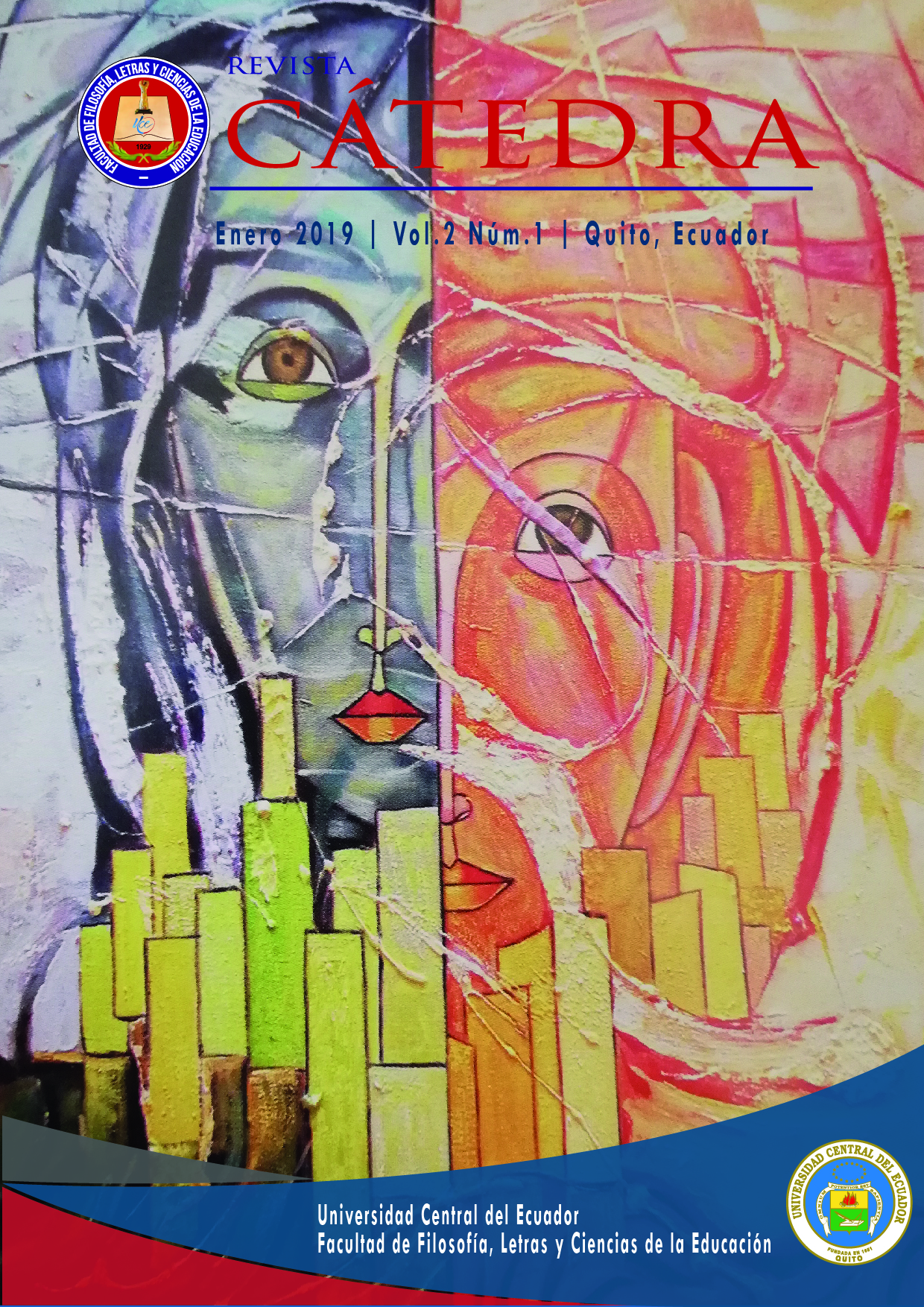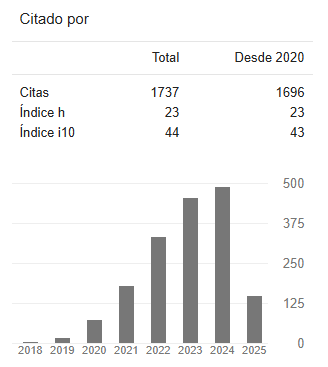Las competencias digitales en docentes y futuros profesionales de la Universidad Central del Ecuador
DOI:
https://doi.org/10.29166/catedra.v2i1.1560Palabras clave:
Competencia, digital, docentes, estudiantes, educación, TICResumen
En la actualidad, el rol que desempeñanlosdocentesde educación superior se fortalece con elmanejo de la conectividad,ya que para enseñarasusestudiantes requieren del conocimiento y aplicación de herramientas tecnológicas que ofrece la web 2.0. Por lo que los docentes deben aprestarse no solo a adquirir conocimientos básicos en tecnología, sino a ser competentes para aplicar ésta en sus prácticas didácticas y, para lograrlo, suenseñanza aprendizaje inicial resulta esencial. El objetivo de esta investigación esrealizar una aproximación diagnóstica sobrelas competencias digitales que poseen futuros profesionales y docentes en el ejercicio de su profesión. Para ello, de una población total de 40.000 estudiantesde la Universidad Central del Ecuador se extrajo lamuestra óptima de 1.799, quienes respondieron a un cuestionario de percepción de conocimiento, aplicación y valoración de competencias digitales. Según los resultados, la mayor parte de los futuros profesionales disponen de un nivel básicode competencia digital. En el caso de los docentes se determinó que el uso de las herramientas de la web 2.0 causa dificultad en la incorporacióna susprocesos de enseñanza, mientras que los estudiantes tienen un apego al uso de las mismas.La implementación de recursos tecnológicos en el proceso de enseñanza-aprendizaje, promueve un cambio significativo en instituciones de educación superior, estopermitirá formar profesionales capaces de enfrentar la sociedad actual.
Descargas
Citas
Alonso, C. (2001). Las nuevas funciones docentes y los nuevos medios. Facultad de Pedagogía. Universitat de Barcelona. Recuperado el 12 de diciembre de 2018, de http://dewey.uab.es/pmarques
Bordignon, F., Cicala, R., Di Salvo, C. J., Martinelli, S., &Perazzo, M. (2011). Entornos virtuales de aprendizaje utilizados para la enseñanza en profesorados y universidades nacionales. La Plata: UNIPE.
Bautista García-Vera A. (2004). Las nuevas tecnologías en la enseñanza. Temas para el usuario.ISBN 978-84-460-2175-9. Madrid: Akal.
Cabero, J., Martínez, F., Salinas, J., (Coords.) (2003). Medios y herramientas de comunicación para la educación universitaria. En Martínez, F., El profesorado ante las nuevas tecnologías. Panamá: Sucesos Publicidad.
Cabero, J., Bartolomé, A., Cebrián, M., Duarte, A., Martínez, F., Salinas, J. (1999). Tecnología educativa. Madrid: Editorial Síntesis.
Cabero, J. y otros (1999). La formación y el perfeccionamiento del profesorado en nuevas tecnologías. En J. Ferres y P. Marqués (coords.), Comunicación educativa y nuevas tecnologías. Madrid, Praxis.
Duderstand, J. (1997). “The future of the university in an age of knowledge”. Journal of Asynchronous Learning Networks (vol. 1, n.º 2). Sloan Consortium. Recuperado el 19 de noviembre de 2018, http://www.aln.org/alnweb/journal/issue2/duderstadt.htm
García Vallinas, E. (2007). Prólogo: Empleo, formación y justicia social. Revista TAVIRA, nº 24, 2008, http://rodin.uca.es:8081/xmlui/bitstream/handle/10498/9962 /34828916.pdf?sequen
Gonzales, B. (2012). Educación y pedagogía para el siglo XXI.Recuperado el 19 de diciembre de 2018, de: http://pedablogia.wordpress.com/2012/06/15/lascompetenciasdigitales- de-los-docentes-del-siglo-xxi/, publicado el 15 de junio de 2012.
Hargreaves, A. (2000). Nueva profesionalidad para una profesión paradójica. Cuadernos de Pedagogía, N° 290. Abril-2000
Ibáñez, C. (2011). Internet y su utilización por parte del profesorado en el aprendizaje de los educandos en el ciclo de educación secundaria del Liceo Experimental Manuel de Salas. Tesis doctoral. Madrid: UCM. OCDE (2002). Organización para la Cooperación y el Desarrollo Económico, Informe. Recuperado el 23 de noviembe de 2018, de http://www.oecd.org/dataoecd/18/27/34023784.pdf.
OEI (2011). Integración TIC en la escuela, indicadores cualitativos y metodología de la investigación. Recuperado de: www.oei-idietics.org
PARCERISA, A. (1996). Materiales curriculares. Cómo elaborarlos, seleccionarlos y usarlos. Barcelona: Graó.
Salinas, J. (1997). “Nuevos ambientes de aprendizaje para una sociedad de la información”. Revista Pensamiento Educativo [artículo en línea] (n.º 20; pp. 81-104). PUC de Chile.
Descargas
Publicado
Versiones
- 2020-09-03 (2)
- 2019-01-30 (1)









